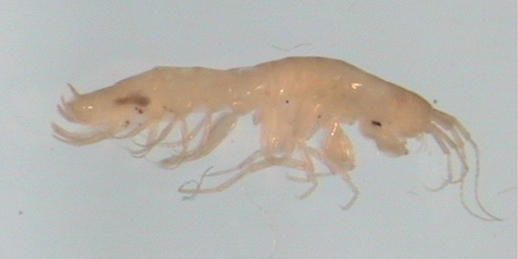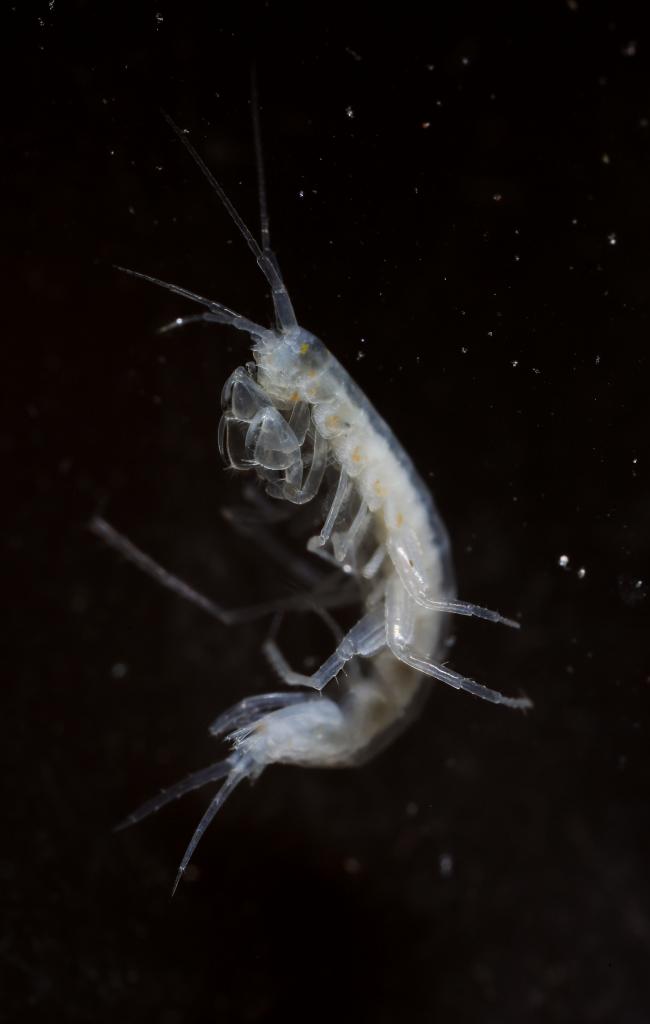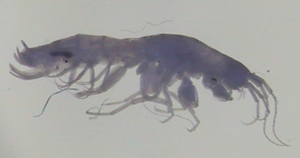
First recorded from a well in the garden of a house at Kerloge, County Wexford in 1980, this was the only known location for this endemic Irish species until 2006, when it was discovered at a second site in County Wexford by Dr. J. Arnscheidt of the University of Ulster. It was then discovered at another four sites in a survey of Irish sygobitic Crustacea in springs and caves carried out by Knight and Penk (2010). These sites included a spring in County Wexford; a spring in County Kilkenny; Central Cave, in the Carrigacrump Quarry, County Cork; and Polldubh Cave on the Burren, County Clare. N. irlandicus was also recorded with N. wexfordensis in the Kilkenny spring and Central Cave. The results of this survey led to the re-examination of specimens, identified as Niphargus irlandicus, collected from the Doolin River Cave (Co. Clare) in 2005 and the discovery that one of the smaller specimens was actually Niphargus wexfordensis. Further work in March 2009 found N. wexfordensis in a third cave on the Burren (Doonyvarden Cave), along with Microniphargus; Andy Lewington found it in a fourth Clare cave (Cullaun two) in 2016. Arnscheidt et al. (2012) extended the known northern distribution of the species when they recorded it in a borehole at Curragh, Co. Kildare. These records show that N. wexfordensis is more widespread than previously thought and also raises some questions on the identity of some of the records in the 1960s and 70s from caves on the Burren. At the time N. irlandicus was the only species known to exist in Ireland.

Niphargus wexfordensis was described by Karaman et. al. (1994), who noted its similarities with Niphargus glenniei, primarily a reduced number of D-setae on article 3 of the mandible palp, a small size [in Karaman et al. (1994) the female holotype was 4.3mm and the male 3.2mm (although it was thought to be immature; recent specimens have been measured up to 5mm] and the outer ramus distinctly shorter than the inner on uropod 2 (although the rami are sub-equal on uropod 1). It differs from N. glenniei in the telson being cleft to almost half its length (three-quarters in N. glenniei and N. irlandicus), with each lobe bearing 3 distal spines and a pair of plumose setae (no spines and 3 distal setae in N. glenniei) and differences in the setation of the mandible palp articles 2 and 3. The main features that separate the species from N. irlandicus include the telson cleft and mandible palp, mentioned above and the more rounded shape of the gnathopods, with gnathopod 2 propodus normally larger than that of gnathopod 1. This latter feature means that superficially N. wexfordensis resembles small specimens of N. fontanus.


(specimen from a spring in County Kilkenny).
